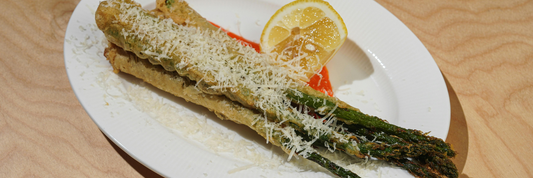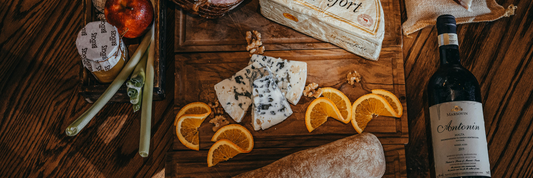The foodservice industry is rapidly evolving, shaped by new lifestyles, post-pandemic habits, and a stronger demand for convenience and personalization. Among these shifts, solo dining has become one of the most notable trends.
According to OpenTable (2023), single-person reservations have grown by over 20% compared to pre-pandemic levels, reflecting a clear move toward independence and experience-driven dining.
For restaurant owners, this isn’t just a short-term trend—it’s an opportunity to rethink space design, service models, and even packaging solutions that better serve this growing customer segment.
At Kimecopak, we go beyond providing eco-friendly packaging. We share market insights and consumer trends that help F&B businesses grow smarter, faster, and more sustainably. Our mission is to empower restaurants to adapt to changing expectations and lead the shift toward a modern, eco-conscious dining industry.
-
Top Paper Bowls for Soup in 2025: Best Sizes, Styles & Where to Buy
- How to Create Engaging Social Media Posts for Your Restaurant
-
Vegan Sushi – The Rising Trend Among Gen Z Customers
The Rise of Solo Dining

In recent years, solo dining has become one of the most notable shifts in modern dining culture.
Several factors are fueling this trend:
- More people living alone: As reported by Statistics Canada, over 4.4 million Canadians now live solo, accounting for nearly 30% of households.
- Remote work lifestyles: Remote workers often look for quiet places with Wi-Fi, good food, and comfort, making restaurants an appealing spot for both work and dining.
- A new mindset of self-care: Eating alone is increasingly seen not as loneliness, but as a form of personal time and mindful enjoyment.
Together, these changes create a promising customer segment that many restaurants have yet to fully tap into.
Why Solo Diners Deserve Attention

Solo diners represent a valuable long-term audience for restaurants because they:
- Dine out more frequently, especially during weekday lunches.
- Tend to be more loyal when they have a positive experience.
- Create organic social media buzz by sharing photos or reviews, naturally boosting brand visibility.
From a business perspective, solo diners also offer operational advantages they require less staff time, faster table turnover, and steady daily revenue.
Five Strategies to Attract and Delight Solo Diners

Design a Solo-Friendly Space
Create spaces where solo diners feel comfortable and welcomed:
- Bar seating, window counters, or small corner tables help customers feel at ease without standing out.
- Communal tables allow guests who enjoy conversation to engage naturally.
- Use warm lighting and simple, calming décor to foster relaxation.
Kimecopak Tip: Restaurants can use paper cups, take-out boxes from Kimecopak in quick-service zones. These products add convenience for solo guests while reinforcing a modern, sustainable brand image.

Offer Menu Options Designed for One
Adapt your menu to better suit individual diners:
- Create smaller portions, personal combos, or mini tasting menus.
- Introduce small plates to allow variety without waste.
- Indicate fast-serving items for busy lunch-hour solo diners.
Added Value: Kimecopak’s individual-sized packaging helps maintain temperature, prevent leaks, and is 100% compostable ideal for dine-in or take-out meals.
Turn Your Restaurant into a Flexible Workspace
With remote work now a norm, restaurants can attract solo diners by becoming comfortable work-friendly spots:
- Provide strong Wi-Fi, power outlets, and comfortable seating.
- Maintain a quiet, well-lit environment for longer stays.
- Offer refillable beverages or “work lunch” combos for customers who linger.
This strategy helps transform your venue into a go-to stop between home and office, increasing visit frequency and loyalty.

Use Technology to Enhance Privacy and Convenience
For solo diners, technology can make the experience smooth and empowering:
- QR code menus for quick browsing and ordering.
- Contactless payments for flexible checkout.
- Reservation tags like “table for one” for better seating management.
According to TouchBistro (2024), 67% of solo diners appreciate being able to manage the entire order-to-payment process independently.

Train Staff with Sensitivity and Care
The way staff interact with solo diners can define their overall experience:
- Replace “Just one today?” with a warm, inclusive greeting like “Welcome! Table for one?”
- Provide attentive but unhurried service.
- Suggest menu items or drinks that suit single diners showing genuine hospitality.
This thoughtful approach turns a one-time visitor into a returning loyal customer.
Conclusion
Solo dining isn’t a passing fad it’s a reflection of modern independence and evolving lifestyles.
Restaurants that embrace this shift can:
- Maintain steady traffic during off-peak hours,
- Improve operational efficiency, and
- Build a progressive, people-centered brand image.
At Kimecopak, we believe that sustainable growth comes not only from eco-friendly products, but also from personalized, respectful guest experiences that make every diner even one dining alone feel valued.
-
LEARN MORE about How "Subscribe for a Happy Life" will benefits your business HERE!
-
LEARN MORE about Kim Vu, sharing on the challenges she faced as a former restaurant owner, and how she overcame them to create KimEcopak HERE!




